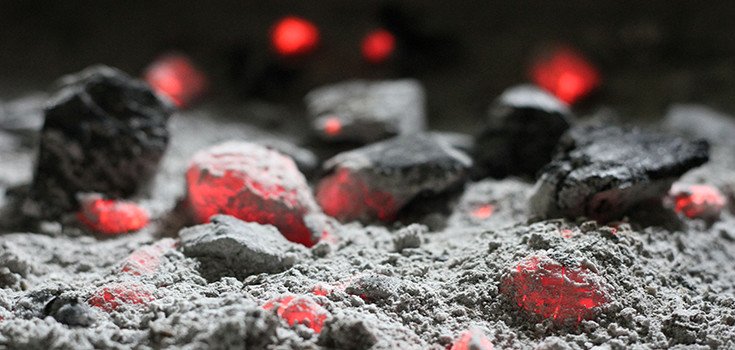Coal Ash Found to be 10 Times more Radioactive than Coal Itself

Researchers are warning that coal ash could be dangerous to the environment and human health due to the presence of radioactive contaminants.
A Duke University-led study found that the coal ash researchers tested were up to 5 times higher than in normal soil, and as much as 10 times higher than the parent coal itself due to the concentration of radioactivity caused by combustion. [1]
The concern is that this radioactivity may be harming humans and the environment. Coal ash is unregulated and contained in holding ponds and landfills in coal-fired power plants across the nation. Coal has been linked to mining accidents, acid rain and greenhouse gas emissions.
On January 2, 2006, 13 miners were trapped when the Sago Mine in Tallmansville, West Virginia, exploded in the early morning hours. When rescuers reached the men about a day later, they found only one survivor. The other 12 miners had died from carbon monoxide poisoning.
Then, on April 5, 2010, an explosion at the Upper Big Branch Mine in Naoma, West Virginia, killed 29 miners. [2]
Coal contains naturally-occurring radium isotopes and lead-210 that are chemical by-products of its uranium and thorium content. Burning coal results in the radium isotopes becoming concentrated in the coal ash, causing the lead-210 to become chemically volatile as it attaches to tiny particles of fly ash – the bits of ash that fly through the air when coal is burned – further enriching the radioactivity, the team explained.
As the ash builds up the holding ponds and landfills, its radioactivity increases.
The Illinois basin was found to have the highest levels of radioactivity, followed by the Appalachian basin and the Powder River basin in Montana and Wyoming.
“Until now, metals and contaminants such as selenium and arsenic have been the major known contaminants of concern in coal ash,” said study co-author Avner Vengosh in a university news release.
“This study raises the possibility we should also be looking for radioactive elements,” said Vengosh, who is a professor of geochemistry and water quality at Duke’s Nicholas School of the Environment.
Due to the lack of regulations, Vengosh says it’s impossible to know how much of the contaminants are making their way into the environment, or how the concentration of coal ash in holding ponds and landfills might be affecting the health of people who live near the sites.
In October, the Environmental Protection Agency will implement its first-ever set of regulations on coal ash disposal. According to the agency’s website, a good deal of remaining fly ash is used in concrete, blended cement, and structural fills/embankments. [3]
Additional Sources:
[1] Duke Environment
[2] CNN
